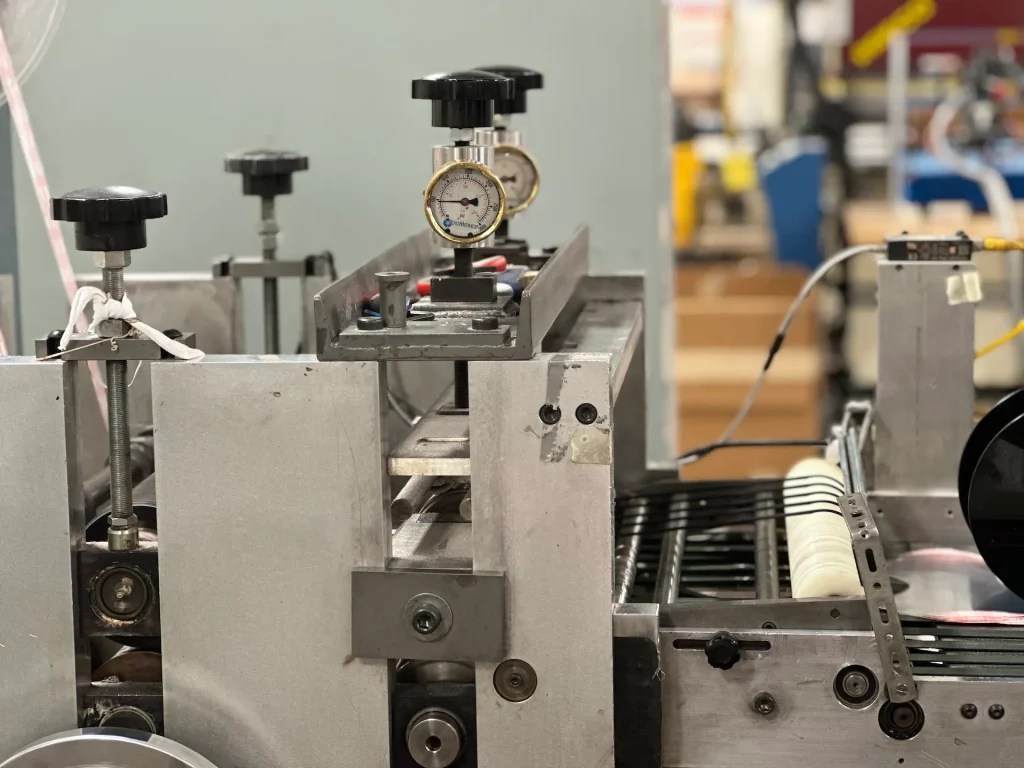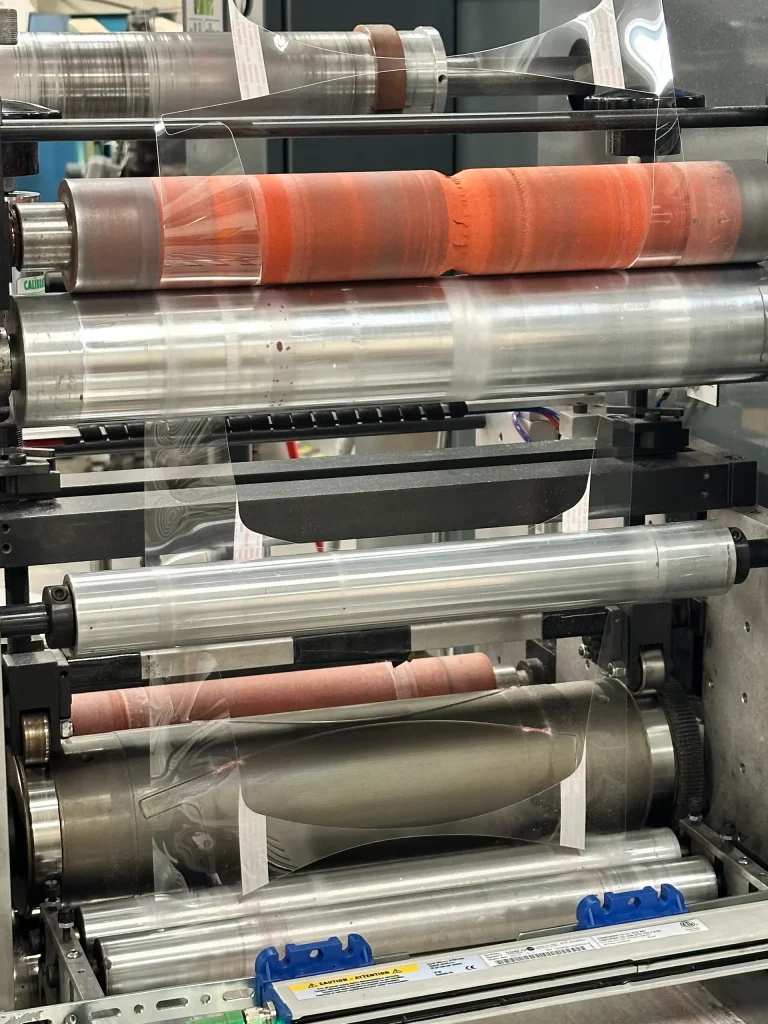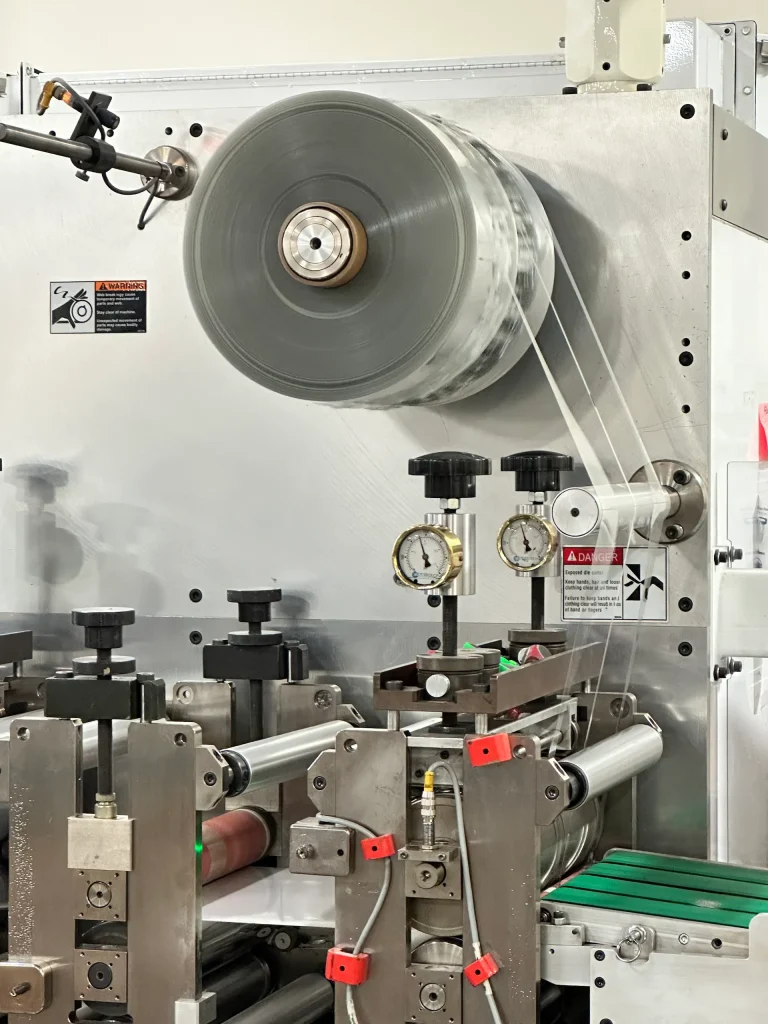
We’ve been serving corporate customers with custom plastic die cutting services for more than 70 years. Our combination of individual experience and organizational expertise enables us to provide the highest quality product within fair timelines. Plastics can vary greatly, however, so it is imperative to use the right process, die material and tooling to assure the final components meet the required specifications.
Or call Josh at (707) 769-4488
While there are broadly two categories of plastics, the actual number of variants is in the dozens. They vary based on chemical properties, such as hardness, resistance to impacts or abrasions, chemical and heat protection among several other factors. We’ve provided a brief overview of some of the most common types, split between thermoplastics which can be reheated and reformed, and thermoset plastics which cannot.
PETG (Polyethylene Terephthalate Glycol)
Polyethylene (PE)
PVC (Polyvinyl Chloride)
Polycarbonate (PC)
ABS (Acrylonitrile Butadiene Styrene)
Polypropylene (PP)
Acrylic (PMMA)
Clear, tough, good chemical resistance
Flexible, chemical resistant, low cost
Versatile, durable, flame-retardant
High impact strength, heat resistant, transparent
Tough, rigid, good dimensional stability
Lightweight, good fatigue resistance, chemical resistant
Optical clarity, UV resistant, rigid
Face shields, packaging, signage
Packaging films, gaskets, containers
Medical tubing, credit cards, wire insulation
Safety glasses, automotive parts, electronic components
Electronic housings, automotive trim, protective headgear
Hinges, living hinges, food containers
Display panels, lenses, light guides
Phenolic
Epoxy
Polyurethane
Silicone
Melamine
Heat resistant, electrical insulator, dimensionally stable
Strong adhesion, chemical resistant, good electrical properties
Flexible, abrasion resistant, impact resistant
Heat resistant, flexible at low temperatures, electrically insulating
Hard, heat resistant, good electrical properties
Electrical components, automotive parts, circuit boards
Adhesives, coatings, electronic encapsulation
Gaskets, seals, cushioning components
Gaskets, seals, medical implants
Kitchenware, decorative laminates, electrical switches
Or call Josh at (707) 769-4488
When working with a die cutting company, it’s important to ensure that someone, either you or your supplier, has the experience and expertise to follow each of the following steps to ensure that your custom plastic die cutting application comes out correctly, on budget and within schedule. They also happen to follow the steps that Colvin-Friedman takes with each of our clients to ensure that projects are successful within tight tolerances or timeframes:
As noted above, choosing the right plastic for the application is a key component in ensuring that the parts meet all required specifications for stress, resistance and other measures. An experienced custom plastic die cutting company can handle issues like PVC’s off-gassing or polyethylene’s low melting point. In order to make it simpler to review plastic types, we’ve included a selector enabling you to choose the traits most important for your application and receive some plastic options to consider.
DFM, or designing for manufacturing, is one of the first elements of quality control in a project. It’s where the design is simulated through either experience and rubrics or actual simulations to ensure that parts will be able to be completed per their design. To take just one example, the distance between holes or holes and edges should be at least 1.5 times material thickness for most plastics. Another would be to consider grain direction to reduce splitting and cracking risks.

Since die cutting is such a flexible process, ensure that the tooling meets the job perfectly. Thinner and less rigid plastics can be cut using rotary dies and different metals. Thicker plastics may require a steel rule die to ensure the cuts are made to the exact depth required. In either case, ensuring that the speed of the process meets scheduling requirements without melting the plastic is a crucial element that inexperienced die cutters can forget.
Maintaining consistent conditions and processes will be the key to any successful custom plastic die cutting project. Experienced technicians and engineers routinely monitor the temperatures of plastics as they go through the production line, also checking and assessing pressure and timing to minimize issues like burring or dimensional changes throughout the entire run.

While monitoring of the processes is critical, so, too are the outcomes. At Colvin-Friedman, quality control staff are constantly looking for signs of stress whitening or other unexpected outcomes. While the other steps in the process should mitigate this possibility, it can happen on rare occasions and is done prior to delivery to a client or integration with their inventory management system.

Or call Josh at (707) 769-4488
Below are some of the best practices we’ve developed that help mitigate some of the common and less common issues with custom plastic die cutting.
Static can cause materials to misalign or stick together during the production process, so active elimination systems like ionizing bars along the production lines are the first line of defense. In some cases, special additives may be required for either the plastic in use or as a coating for the dies to ensure static is kept at bay throughout the process, along with maintaining consistent relative humidity.
While the most common reason for edge inconsistency is a lack of die maintenance, other factors come into play as well. Fibrous plastics that have a specific grain can be cut using shear action or a two-stage cutting process. Experts will also be able to modify the speeds and pressures involved to maximize efficiency without reducing quality.
Temperature control is critical in ensuring custom plastic die cutting success. Experienced die cutters will acclimate the materials to the operating conditions prior to a run and consistently monitor both temperature and relative humidity levels within the facility.
An experienced die cutter will carefully monitor production run speeds to maintain consistent temperature ranges as well as pause cycles. For certain low-melt plastics, different die coatings may be required.
During the design phase, check that there are minimal stress points and ensure that the die cutter’s die-making accounts for potential brittleness. In some cases, heating the material beforehand or annealing afterwards can minimize the effect.
Ensure the die cutter uses pressure control systems, including feedback loops along with floating plates, to adapt to minor variations. Verify that the die cutter has a schedule in place for regular die maintenance and replacement for larger orders.
If you would like more information about our custom metal die-cutting services, process, or product capabilities, please use the number below to call our Vice President, Josh Rodman. If you would like to receive a free project quote, click the button below.
Or call Josh at (707) 769-4488
Lorem Ipsum is simply dummy text of the printing and typesetting industry. Lorem Ipsum has been the industry’s standard dummy text ever since the 1500s,
1311 Commerce Street • Petaluma, CA 94954
copyright © 2025 Colvin Friedman Company. All Right Reserved.